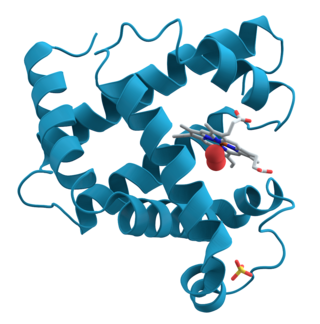
Structural biology, as defined by the Journal of Structural Biology, deals with structural analysis of living material at every level of organization.
Zoology is the scientific study of animals. Its studies include the structure, embryology, classification, habits, and distribution of all animals, both living and extinct, and how they interact with their ecosystems. Zoology is one of the primary branches of biology. The term is derived from Ancient Greek ζῷον, zōion ('animal'), and λόγος, logos.
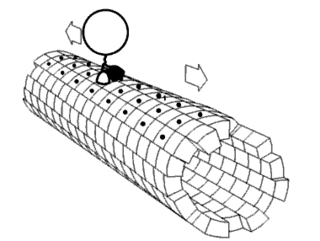
Biophysics is an interdisciplinary science that applies approaches and methods traditionally used in physics to study biological phenomena. Biophysics covers all scales of biological organization, from molecular to organismic and populations. Biophysical research shares significant overlap with biochemistry, molecular biology, physical chemistry, physiology, nanotechnology, bioengineering, computational biology, biomechanics, developmental biology and systems biology.
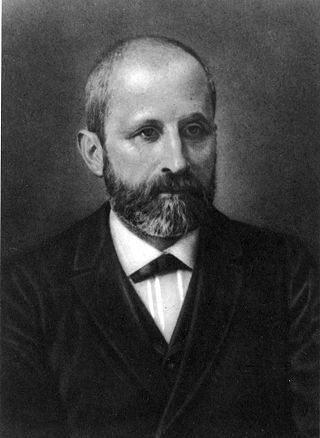
Johannes Friedrich Miescher was a Swiss physician and biologist. He was the first scientist to isolate nucleic acid in 1869. Miescher also identified protamine and made several other discoveries.

Neutrophils are a type of phagocytic white blood cell and part of innate immunity. More specifically, they form the most abundant type of granulocytes and make up 40% to 70% of all white blood cells in humans. Their functions vary in different animals. They are also known as neutrocytes, heterophils or polymorphonuclear leukocytes.

George Emil Palade was a Romanian-American cell biologist. Described as "the most influential cell biologist ever", in 1974 he was awarded the Nobel Prize in Physiology or Medicine along with Albert Claude and Christian de Duve. The prize was granted for his innovations in electron microscopy and cell fractionation which together laid the foundations of modern molecular cell biology, the most notable discovery being the ribosomes of the endoplasmic reticulum – which he first described in 1955.
Neurophysiology is a branch of physiology and neuroscience concerned with the functions of the nervous system and their mechanisms. The term neurophysiology originates from the Greek word νεῦρον ("nerve") and physiology. Neurophysiology has applications in the prevention, diagnosis, and treatment of many neurological and psychiatric diseases. Neurophysiological techniques are also used by clinical neurophysiologists to diagnose and monitor patients with neurological diseases.
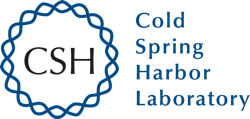
Cold Spring Harbor Laboratory (CSHL) is a private, non-profit institution with research programs focusing on cancer, neuroscience, plant biology, genomics, and quantitative biology. It is located in Laurel Hollow on Long Island, New York.

The sinoatrial node is an oval shaped region of special cardiac muscle in the upper back wall of the right atrium made up of cells known as pacemaker cells. The sinus node is approximately 15 mm long, 3 mm wide, and 1 mm thick, located directly below and to the side of the superior vena cava.
In cell biology, a granule is a small particle barely visible by light microscopy. The term is most often used to describe a secretory vesicle containing important components of cell phyisology. Examples of granules include granulocytes, platelet granules, insulin granules, germane granules, starch granules, and stress granules.

Albert Claude was a Belgian-American cell biologist and medical doctor who shared the Nobel Prize in Physiology or Medicine in 1974 with Christian de Duve and George Emil Palade. His elementary education started in a comprehensive primary school at Longlier, his birthplace. He served in the British Intelligence Service during the First World War, and got imprisoned in concentration camps twice. In recognition of his service, he was granted enrolment at the University of Liège in Belgium to study medicine without any formal education required for the course. He earned his Doctor of Medicine degree in 1928. Devoted to medical research, he initially joined German institutes in Berlin. In 1929 he found an opportunity to join the Rockefeller Institute in New York. At Rockefeller University he made his most groundbreaking achievements in cell biology. In 1930 he developed the technique of cell fractionation, by which he discovered the agent of the Rous sarcoma, as well as components of cell organelles such as the mitochondrion, chloroplast, endoplasmic reticulum, Golgi apparatus, ribosome, and lysosome. He was the first to employ the electron microscope in the field of biology. In 1945 he published the first detailed structure of cell. His collective works established the complex functional and structural properties of cells.
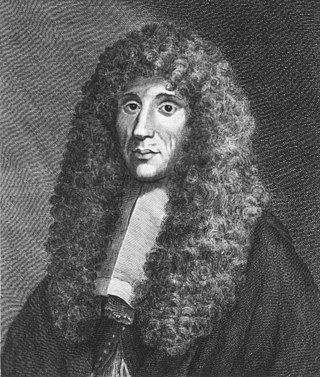
A biologist is a scientist who conducts research in biology. Biologists are interested in studying life on Earth, whether it is an individual cell, a multicellular organism, or a community of interacting populations. They usually specialize in a particular branch of biology and have a specific research focus.

Interleukin 8 is a chemokine produced by macrophages and other cell types such as epithelial cells, airway smooth muscle cells and endothelial cells. Endothelial cells store IL-8 in their storage vesicles, the Weibel–Palade bodies. In humans, the interleukin-8 protein is encoded by the CXCL8 gene. IL-8 is initially produced as a precursor peptide of 99 amino acids which then undergoes cleavage to create several active IL-8 isoforms. In culture, a 72 amino acid peptide is the major form secreted by macrophages.
Winfried Denk is a German physicist. He built the first two-photon microscope while he was a graduate student in Watt W. Webb's lab at Cornell University, in 1989.

S100 calcium-binding protein A8 (S100A8) is a protein that in humans is encoded by the S100A8 gene. It is also known as calgranulin A.
Shinya Inoué was a Japanese American biophysicist and cell biologist, a member of the National Academy of Sciences. His research field was visualizing dynamic processes within living cells using light microscopy.

Randy O. Wayne is an associate professor of plant biology at Cornell University. Along with his former colleague Peter K. Hepler, Wayne established the role of calcium in regulating plant growth. Their 1985 article Calcium and Plant Development was awarded the "Citation Classic" award from Current Contents magazine. They researched how plant cells sense gravity through pressure, the water permeability of plant membranes, light microscopy, as well as the effects of calcium on plant development. Wayne authored two textbooks, including Plant Cell Biology: From Astronomy to Zoology and Light and Video Microscopy.
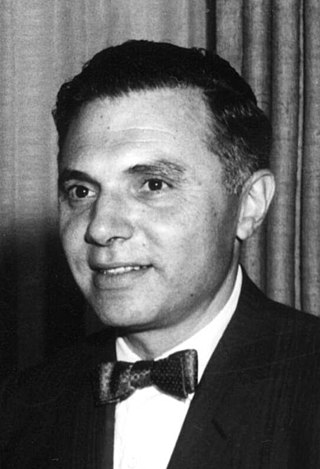
Harvey Milton Patt was an American physiologist, radiation biologist, and cell biologist, who made "important scientific contributions in cell cycle kinetics and tissue repopulation."
The American Society of Plant Biologists (ASPB) is a non-profit professional society for research and education in plant science with over 4,000 members world-wide. It was founded in 1924, as the American Society of Plant Physiologists (ASPP). The name was changed to the American Society of Plant Biologists (ASPB) as of 2001. Membership in the society is open to any person from any country who deals with physiology, molecular biology, environmental biology, cell biology and plant biophysics or related issues.
Melike Lakadamyali is a Cypriot physicist and a Full Professor of Physiology and of Cell and Developmental Biology (secondary) at the University of Pennsylvania in Philadelphia, renowned for her work in super-resolution microscopy and Single Molecule Biophysics. She is the Group Leader of the Lakadamyali Lab.















